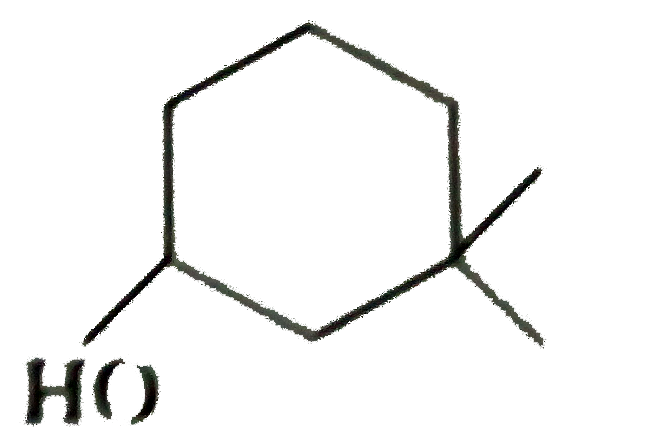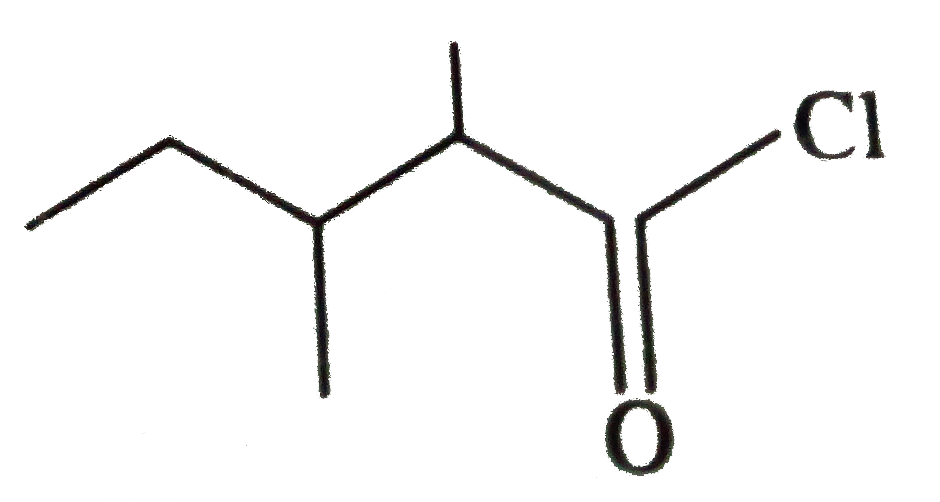MCQB from S DINESH & CO CHEMISTRY (HINGLISH) ORGANIC CHEMISTRY - SOME BASIC PRINCIPLES & TECHNIOUES for Class 11
| Class 11 | CHEMISTRY |
| Chapter | ORGANIC CHEMISTRY - SOME BASIC PRINCIPLES & TECHNIOUES |
| S DINESH & CO CHEMISTRY (HINGLISH) | MCQB |
| Medium | English |
| Academic Year | 2023-2024 |
Question 28
0.378 g od an organic compound containing carbon and hydrogen was subjected to cobustion by Liebig's method , the CO2 and H2Oformed were passed through potash bulbs and CaCl2 (anhydrous) tube. At end of the experiment, the increase in the respective weights were 0.264 g and 0.162 g. Calculate the percentage of carbon and hydrogen.View SolutionQuestion 39
0.3160 g of an organic substance was heated with fuming nitric acid in a carius tube to convert phosphorus present into phosphoric acid. Addition of magnesia mixture formed MgNH4PO4 which upon heating gave 0.1697gMg2P2O7. Calculate the percentage of phosphorus in the compound.View SolutionQuestion 45
The fragrance of flowers is due to the presence of some steam volatile organic compounds called essential oils. These are generally insoluble in water at room temperature but are miscible with water vapours in vapour phase. A suitable method for the extraction of these oils from the flowers is :View SolutionQuestion 63
Match the terms mentioned in Column I with terms in Column II.
Column IColumn II(a)carbocation(i)Cyclohexane and hex-1-ene(b)Nucleophile(ii)Conjugation of electrons of C - H σ bond with empty p-orbital present at adjacent positively charged carbon (c)Hyperconjugation(iii)Sp2 hybridised carbon with empty p-orbital(d)Isomers(iv)Ethyne(e)sp hybridisation(v)Species that can receive a pair of electrons(f)Electrophile(vi)Species that can supply a pair of electronsView SolutionQuestion 72
Assertion (A) : Compounds of a mixture of red and blue inks can be separated by distributing the compounds between stationary and mobile phases in paper chromatography.
Reason (R) : The coloured components of inks migrate at different rates because paper selectively retains different components according to the difference in their partition between the two phases.View SolutionQuestion 117
Which of the following represented the correct IUPAC names for the compounds concerned ?
(a) 2, 2-Dichloropentane or 2-Dichloropentane
(b) 2, 3-Dimethylpentane or 3, 4-Dimethylpentane
(c) 2-Bromo-4-methylpentane or
4-Bromo-2-methylpentane
(d) But-3-en-1-ol or But-4-ol-1-ene.View SolutionQuestion 227
The resonance effect is defined as 'the polarity produced in the molecule by the interaction of two π-bonds or between a π-bond and lone pair of electrons present on an adjacentatom.' The effect is transmitted through the chain.
In positive resonance effect, the transfer of electrons is away from an atom or substituent group attached to the conjugated system. This electron displacement makes certain positions in the molecule of high electron densities. In negative resonance effect, the transfer of electrons is towards the atom or substituent group attached to the conjugated system.
Which of the following does not show resonance effect ?View SolutionQuestion 228
The resonance effect is defined as 'the polarity produced in the molecule by the interaction of two π-bonds or between a π-bond and lone pair of electrons present on an adjacentatom.' The effect is transmitted through the chain.
In positive resonance effect, the transfer of electrons is away from an atom or substituent group attached to the conjugated system. This electron displacement makes certain positions in the molecule of high electron densities. In negative resonance effect, the transfer of electrons is towards the atom or substituent group attached to the conjugated system.
Which of the following shows +M effect ?View SolutionQuestion 229
The resonance effect is defined as 'the polarity produced in the molecule by the interaction of two π-bonds or between a π-bond and lone pair of electrons present on an adjacentatom.' The effect is transmitted through the chain.
In positive resonance effect, the transfer of electrons is away from an atom or substituent group attached to the conjugated system. This electron displacement makes certain positions in the molecule of high electron densities. In negative resonance effect, the transfer of electrons is towards the atom or substituent group attached to the conjugated system.
Which of the following carboxylate ions is the most stable ?View SolutionQuestion 230
The resonance effect is defined as 'the polarity produced in the molecule by the interaction of two π-bonds or between a π-bond and lone pair of electrons present on an adjacentatom.' The effect is transmitted through the chain.
In positive resonance effect, the transfer of electrons is away from an atom or substituent group attached to the conjugated system. This electron displacement makes certain positions in the molecule of high electron densities. In negative resonance effect, the transfer of electrons is towards the atom or substituent group attached to the conjugated system.
The correct statement regarding a carbonyl compound with a hydrogen atom on its alpha carbon, isView SolutionQuestion 231
The resonance effect is defined as 'the polarity produced in the molecule by the interaction of two π-bonds or between a π-bond and lone pair of electrons present on an adjacentatom.' The effect is transmitted through the chain.
In positive resonance effect, the transfer of electrons is away from an atom or substituent group attached to the conjugated system. This electron displacement makes certain positions in the molecule of high electron densities. In negative resonance effect, the transfer of electrons is towards the atom or substituent group attached to the conjugated system.
What is the IUPAC name for :
 View Solution
View SolutionQuestion 232
The resonance effect is defined as 'the polarity produced in the molecule by the interaction of two π-bonds or between a π-bond and lone pair of electrons present on an adjacentatom.' The effect is transmitted through the chain.
In positive resonance effect, the transfer of electrons is away from an atom or substituent group attached to the conjugated system. This electron displacement makes certain positions in the molecule of high electron densities. In negative resonance effect, the transfer of electrons is towards the atom or substituent group attached to the conjugated system.
Which of the following intermediates is pyramidal in shape ?View SolutionQuestion 233
The resonance effect is defined as 'the polarity produced in the molecule by the interaction of two π-bonds or between a π-bond and lone pair of electrons present on an adjacentatom.' The effect is transmitted through the chain.
In positive resonance effect, the transfer of electrons is away from an atom or substituent group attached to the conjugated system. This electron displacement makes certain positions in the molecule of high electron densities. In negative resonance effect, the transfer of electrons is towards the atom or substituent group attached to the conjugated system.
Which of the following free radicials is the most stable ?View SolutionQuestion 263
For the estimation of nitrogen, 1.4 g of an organic compound was digested by Kjeldahl method and the evolved ammonia acid absorbed in 60 mL of M10 sulphuric acid. The unreacted acid required 20 mL of M10 sodium hydroxide for complete neutralization. the percentage of nitrogen in the compound isView Solution
All Exercises from S DINESH & CO CHEMISTRY (HINGLISH) Class 11 CHEMISTRY ORGANIC CHEMISTRY - SOME BASIC PRINCIPLES & TECHNIOUES
- ASSERTION-REASON
- ASSIGNMENT
- DETECTION & ESTIMATION OF ORGANIC COMPOUNDS
- MATCHING TYPE
- MATRIX
- MCQB
- MCQS
- NCERT EXEMPLAR PROBLEMS
- PROBLEMS FOR PRACTICE
- PURIFICATION & CHARACTERISATION OF ORGANIC COMPOUNDS
- PURIFICATION OF ORGANIC COMPOUNDS
- SOME BASIC PRINCIPLES IN ORGANIC CHEMISTRY
- ASSERTION-REASON
- ASSIGNMENT
- DETECTION & ESTIMATION OF ORGANIC COMPOUNDS
- MATCHING TYPE
- MATRIX
- MCQB
- MCQS
- NCERT EXEMPLAR PROBLEMS
- PROBLEMS FOR PRACTICE
- PURIFICATION & CHARACTERISATION OF ORGANIC COMPOUNDS
- PURIFICATION OF ORGANIC COMPOUNDS
- SOME BASIC PRINCIPLES IN ORGANIC CHEMISTRY
- ASSERTION-REASON
- ASSIGNMENT
- DETECTION & ESTIMATION OF ORGANIC COMPOUNDS
- MATCHING TYPE
- MATRIX
- MCQB
- MCQS
- NCERT EXEMPLAR PROBLEMS
- PROBLEMS FOR PRACTICE
- PURIFICATION & CHARACTERISATION OF ORGANIC COMPOUNDS
- PURIFICATION OF ORGANIC COMPOUNDS
- SOME BASIC PRINCIPLES IN ORGANIC CHEMISTRY
- ASSERTION-REASON
- ASSIGNMENT
- DETECTION & ESTIMATION OF ORGANIC COMPOUNDS
- MATCHING TYPE
- MATRIX
- MCQB
- MCQS
- NCERT EXEMPLAR PROBLEMS
- PROBLEMS FOR PRACTICE
- PURIFICATION & CHARACTERISATION OF ORGANIC COMPOUNDS
- PURIFICATION OF ORGANIC COMPOUNDS
- SOME BASIC PRINCIPLES IN ORGANIC CHEMISTRY
- CONCEPT BASED QUESTION
- EXAMPLE
- N.C.E.R.T.
- SHORT ANSWER TYPE QUESTION
- VALUE BASED QUESTION
- CONCEPT BASED QUESTION
- EXAMPLE
- N.C.E.R.T.
- SHORT ANSWER TYPE QUESTION
- VALUE BASED QUESTION
- CONCEPT BASED QUESTION
- EXAMPLE
- N.C.E.R.T.
- SHORT ANSWER TYPE QUESTION
- VALUE BASED QUESTION
- CONCEPT BASED QUESTION
- EXAMPLE
- N.C.E.R.T.
- SHORT ANSWER TYPE QUESTION
- VALUE BASED QUESTION
 is
is 










 is :
is : is
is is :
is : is
is





